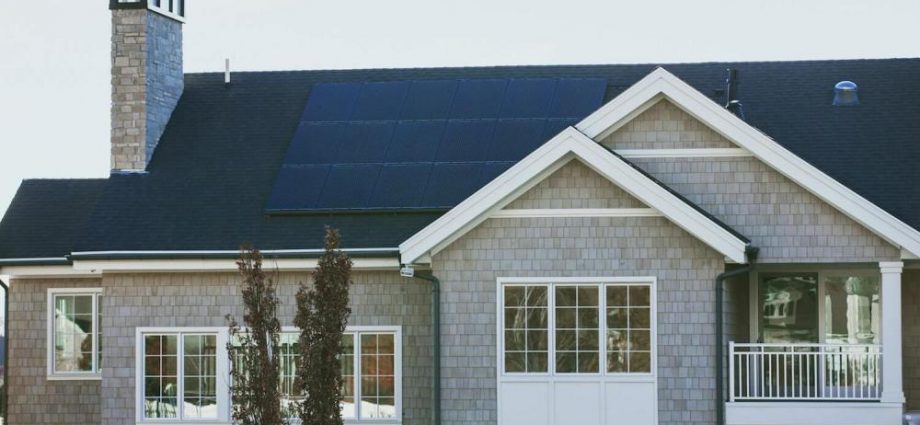More and more people in our country decide to install a photovoltaic installation on their property. Many people wonder if it could really be done on their own. Of course, you can do it if you have an electrical license or know people who have an electrical license. If so, we can try to install solar panels ourselves. Of course, we must take into account here that in order for the photovoltaic panel to work properly and for the entire investment to pay off, first of all, we must have a professional calculation of what the power of our panels should be and we should install them properly. Let us now focus on the latter point.
Where to mount the photovoltaic set, on the roof or at ground level?
Most photovoltaic sets are mounted on roofs. For this reason, there is a belief that it is best to install photovoltaic cells on the roof. This is of course not true. A photovoltaic set on the roof is most often installed when there is not enough space to install photovoltaic panels on the ground. Ground photovoltaic installations have much more advantages than rooftop installations. First of all, the installation on the ground is much easier to install, but on the other hand, we can also set the installation at the best angle for the installation to work most efficiently. On the roof it is possible, but not always. Much also depends on how sloping the roof is. There are situations that even if the roof is not optimally sloped, we can somehow compensate for this, but of course it is not always feasible.
- https://www.icono-kreatywni.pl/jak-usunac-konto-apple/
- https://www.zark.pl/co-to-jest-rehabilitacja-kardiologiczna/
- http://www.scenariusz.edu.pl/zastosowanie-i-zalety-konstrukcji-stalowych/
The second thing that speaks in favor of mounting panels on the ground is the availability of photovoltaic panels. It should be noted that although the panels work less efficiently in winter, they can also produce electricity. In winter, however, it often happens that a large layer of snow falls and the panels, if they are not cleared of snow, will not work at full capacity. It is similar in autumn, for example, when leaves can fall on our photovoltaic panels. It is also important, for example, that in spring and summer, many plants pollen intensively. For example, rapeseed, which dusts intensively, can cover our panels with a thin layer of pollen, which even then means that a large part of the sun’s rays cannot interact with our photovoltaic cells. If we have panels located low, then, if necessary, we can simply wipe and clean them. If they are located on the roof, access to such panels is definitely difficult. Another thing worth mentioning is the service. So it may happen that our panels have been damaged for some reason and need to be replaced. If, of course, we have panels on the roof, then most often we have to order a suitable basket boom for such work, which also generates additional and unnecessary costs.
- miod24.com.pl/pl/c/Miod-Malinowy/24
- fotowoltaika24.biz.pl/oferta/fotowoltaika-slupsk/
- szkola-muzyczna24.com.pl/nauka-gry-na-pianinie-fortepianie-warszawa/
Proper inclination of the panels
We have mentioned this before, but it would be worth expanding on this topic a bit, i.e. for photovoltaics to work at full efficiency, they must be set at the right angle. Depending on the latitude at which our installation will be built, the angle of inclination of these panels will be different. In Poland, it is assumed on average that it should be about 45 degrees, but there will also be differences even in such a relatively small space. The angle in Podkarpacie will be slightly different, and it will be slightly different on the coast. It may differ, for example, by 2 or 3 degrees, but it can have a real impact on how much electricity will be produced, so we should of course check at what angle the panels should be tilted in the place where we install our photovoltaic panels.
Orientation by cardinal directions
There are a number of opinions saying that in Poland photovoltaic panels do not pay off, because in autumn and winter they produce very little electricity. This view is of course not true, especially if it refers to on-grid installations, ie if our panels are connected to the general power grid. We will not go into the details of settlements with the power plant here, but this type of system means that even in winter or autumn, when energy production is low, the entire installation can pay off. Then we simply use the surpluses that were produced between April and September, i.e. in the periods when our installation produces the most electricity. We must note here that for this installation to work efficiently, we must set it preferably in the south-west direction, because thanks to this they will be best lit. Here also arises the issue that it is better to install panels on the ground (of course, if we have such a large area), because houses are not always built in such a way that they can provide such an assembly direction.








